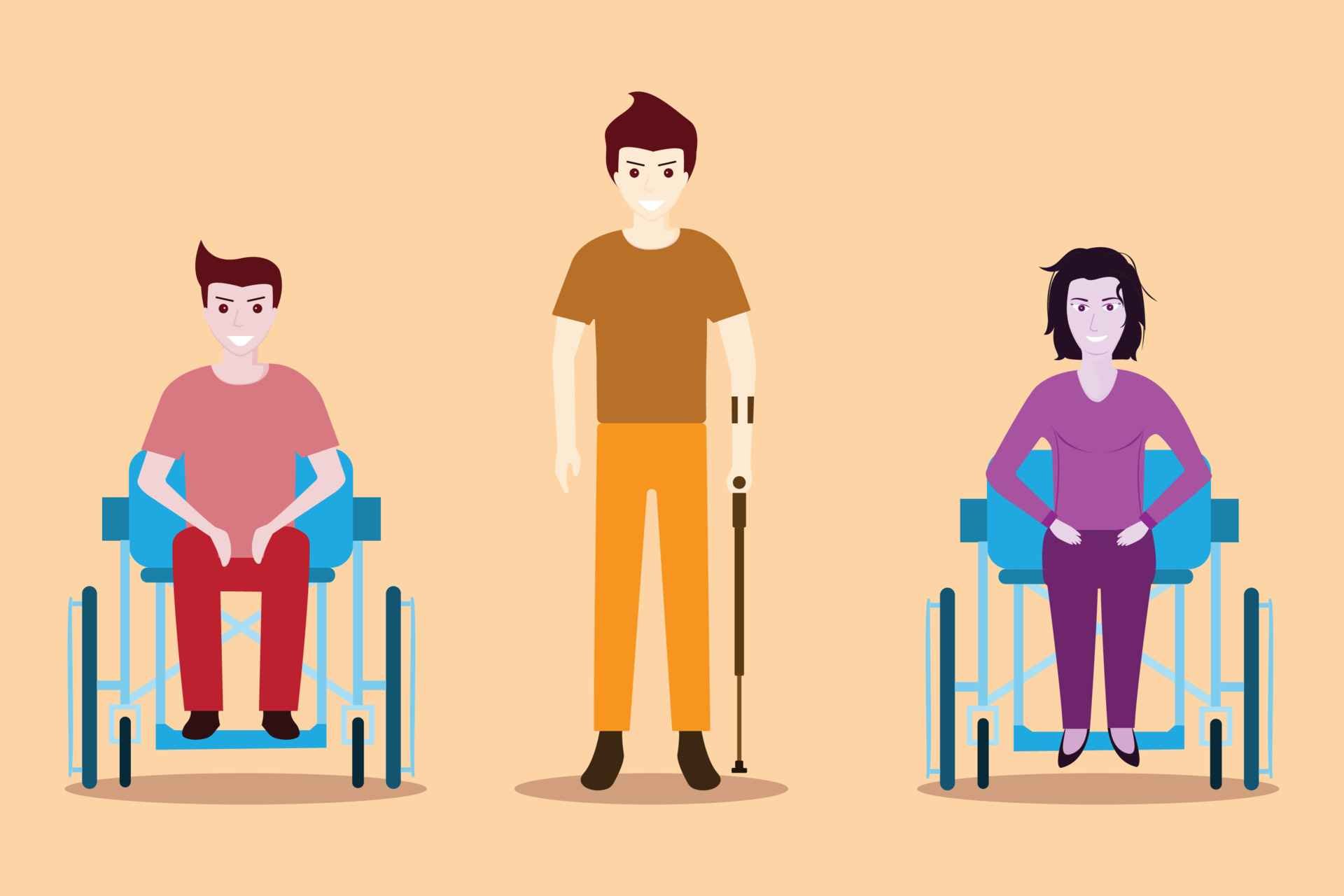Mobility Aids for Chronic Pain: A Comprehensive Guide
Mobility Aids for Chronic Pain
Chronic pain can be a relentless nemesis, impinging on your everyday life and restricting your mobility. Identifying the best mobility aids for chronic pain can be a game-changer, enhancing your quality of life and fostering independence. This comprehensive guide will help you navigate the spectrum of mobility aids available, and assist you in determining the most suitable ones for your specific needs.
Disclosure: This blog post may include affiliate links of companies and products that we believe in, which means The Chronic Pain Blog could earn a commission if you choose to buy something via these links, without any extra charge to you.
Understanding Chronic Pain and Mobility Challenges
Chronic pain can manifest as a constant or intermittent discomfort lasting over 12 weeks. It can vary from mild to excruciating, episodic to continuous, and be merely inconvenient or utterly incapacitating. When chronic pain influences your mobility, it can impose significant limitations on your life, hindering activities like shopping, cooking, or even simple movements around your home.
Chronic pain can morph into a daily challenge, impacting every facet of your life, with one of the most debilitating consequences being diminished mobility. Pain can make it challenging to move around and accomplish tasks, making the routine seem daunting. The good news is that there are several mobility aids and products designed to aid pain management and enhance your quality of life.
Mobility Aids for Chronic Pain
Evaluating the Need for a Mobility Aid for Chronic Pain
Before embarking on your journey to discover the ideal mobility aid, it's crucial to understand your specific needs and limitations. Everyone is unique, with different pain tolerances, lifestyles, and mobility requirements. Here are some considerations to bear in mind when deciding if it's time to choose a mobility device for managing chronic pain:
Pain Threshold and Lifestyle: Everyone has a unique pain tolerance and lifestyle. Understand how your chronic pain affects your daily life and if a mobility aid can make tasks more manageable.
Mobility Needs: Assess your mobility needs and limitations to determine the type of device that would be most beneficial for you.
Physical Abilities: Consider your physical abilities and limitations before using a mobility device.
Home Environment: Think about your home's layout and whether a mobility device would be practical. You may need to consider factors like narrow doorways or tight spaces.
Lifestyle: Reflect on your lifestyle and how a mobility device might fit into it. For example, if you enjoy spending time outdoors, a scooter or powerchair might be a good choice.
Exploring Different Types of Mobility Aids
When chronic pain limits your mobility and impairs your life, it may be time to consider using a mobility device. These tools can aid in maintaining your independence and enhancing your quality of life. Here are some types of mobility devices that might be helpful for chronic pain sufferers:
Knee Walkers or Knee Scooters
Knee walkers or knee scooters are mobility aids that can be helpful for people experiencing chronic pain in one leg below the knee or ankle. When you use a knee walker, you rest your injured leg on a padded platform and use your other leg to push the scooter forward. This helps you maintain an upright posture while allowing you to move around without putting weight on the injured leg.
Knee walkers can be especially useful for people who have just undergone surgery on their foot or ankle or have a fracture or sprain that requires them to stay off their feet. They can help with mobility and independence while still allowing the affected area to heal. Knee walkers are also useful for people who have arthritis or other chronic conditions that make it painful to put weight on their lower legs and feet.
Using a cane can be a good option for a mobility aid if one side of the body is weaker than the other. Using a cane can provide stability and promote balance. It can help reduce the strain on the weaker side of the body and improve posture. A cane can also help relieve pain and pressure on the joints by redistributing the weight of the body. Additionally, canes are relatively inexpensive and easy to use, making them a convenient option for people with chronic pain who need some assistance with mobility.
Walkers and Rollators
Walkers can help with chronic pain by providing additional support and stability for individuals who require more assistance than a cane can provide. Walkers come in various types, including traditional walkers, walkers with wheels, and walkers with seats. These mobility aids can improve balance and help reduce the risk of falls for individuals with chronic pain who may struggle with mobility.
Wheelchairs and Powerchairs
Wheelchairs can help with chronic pain by providing a means of mobility when standing or walking is too painful or not possible. By sitting in a wheelchair, the user can conserve their energy and reduce the amount of weight-bearing on their lower extremities. This can be particularly helpful for individuals with chronic pain in their legs or hips. Wheelchairs also come in a variety of sizes and types, which can be customized to fit the specific needs of the user.
Powerchairs and Scooters
Chronic pain can cause fatigue. Though a wheelchair may be great for helping you keep a sense of independence, a powerchair or scooter may help you save energy and time. It is also a less taxing option on the arms if you have limited arm strength or pain in the arms.
Navigating the World of Mobility Aids: A Buyer’s Guide
Choosing the right mobility aid can be an overwhelming task given the wide array of options available today. To make this task less daunting and more effective, it's crucial to understand your specific mobility issues. This will help you narrow down your options and select the most suitable mobility aid for your needs.
Canes and Walkers
Canes and walkers may be a good choice if your fibromyalgia or ME/CFS:
Causes dizziness or balance problems
You have extreme pain in a leg, foot, or hip
Weakness in the legs
Being able to lean helps you conserve energy
Wheelchairs and Scooters
A lot goes into choosing the right wheelchair or scooter for you, especially if you plan to use it a lot. You'll need to find one that is:
Comfortable for long-term use
Appropriately sized and maneuverable for the places you'll use it (scooters can be difficult to use in small spaces.)
Final Thoughts
Choosing the right mobility aid is an essential step in managing chronic pain and improving mobility. It's crucial to consider individual needs, physical capabilities, the environment, and financial considerations before making a choice. Consult with your healthcare provider to ensure you make the most beneficial decision for your unique situation. And remember, the right mobility aid can significantly enhance your quality of life, enabling you to participate in activities and go places that may have been difficult or impossible without assistance.
Check out our other posts and our book recommendations to learn more!
The Chronic Pain Blog 💗
DISCLAIMER: INFORMATION PROVIDED VIA OUR CONTENT (VIDEOS, AUDIOS, BLOGS, PDFS, POSTS AND OR COMMENTS) ARE FOR GENERAL INFORMATION PURPOSES ONLY AND NOTHING PUBLISHED CONSTITUTES ADVICE UPON WHICH YOU SHOULD RELY. WE DO NOT ACCEPT LIABILITY UNDER ANY CIRCUMSTANCES AND ARE NOT RESPONSIBLE FOR THE CONTENT OR ACCURACY, OR FOR ANY OPINIONS, VIEWS OR VALUES EXPRESSED IN ANY VIDEOS, BLOGS, POSTS AND OR COMMENTS SUBMITTED BY USERS AND THOSE REMAIN SOLELY THE OPINIONS, VIEWS AND OR VALUES OF THE RELEVANT USER.
Sources:
Health Talk (2012). Chronic Pain - Walking aids, Wheelchairs and Adaptations for Chronic Pain. [online] healthtalk.org.
Pain Scale (n.d.). Deciding to Use a Mobility Device. [online] painscale.com.
Verywell (2019). Mobility Aids You Should Use for Fibromyalgia & ME/CFS. [online] Verywell Health.







